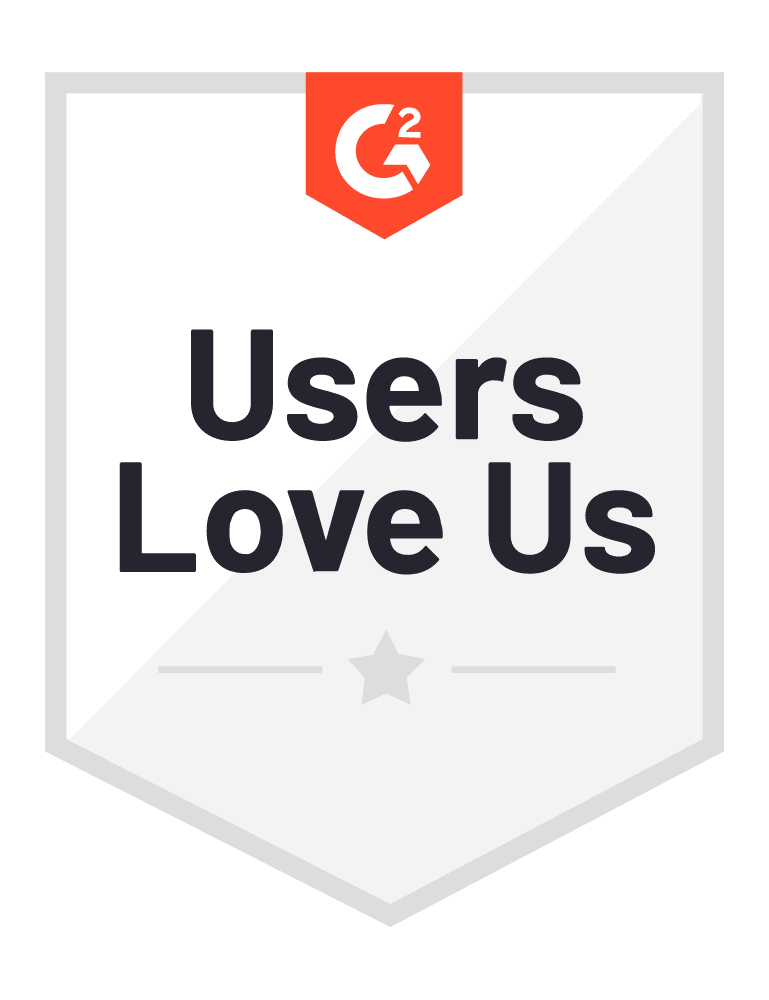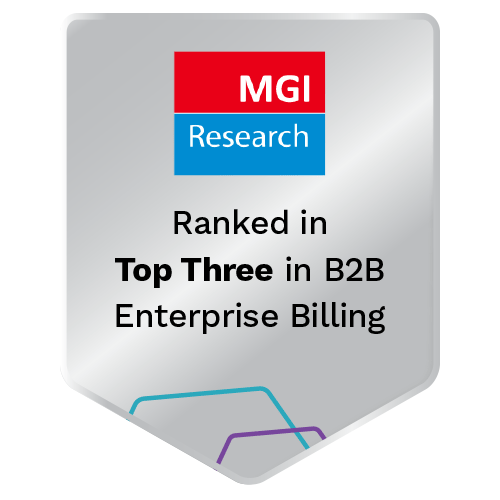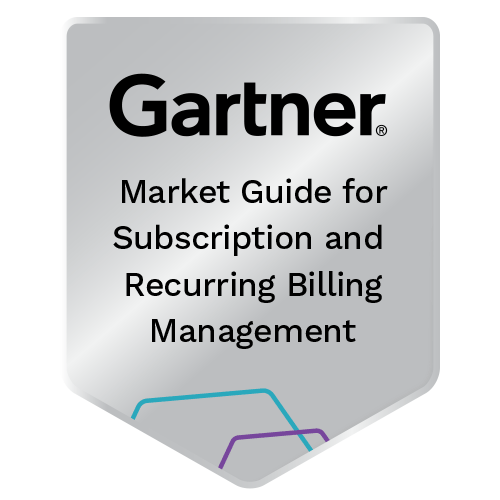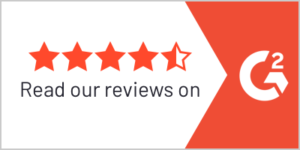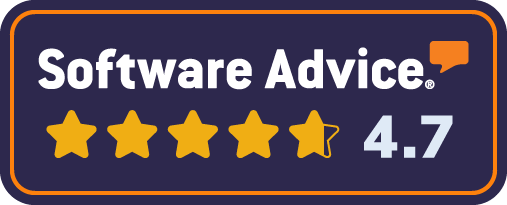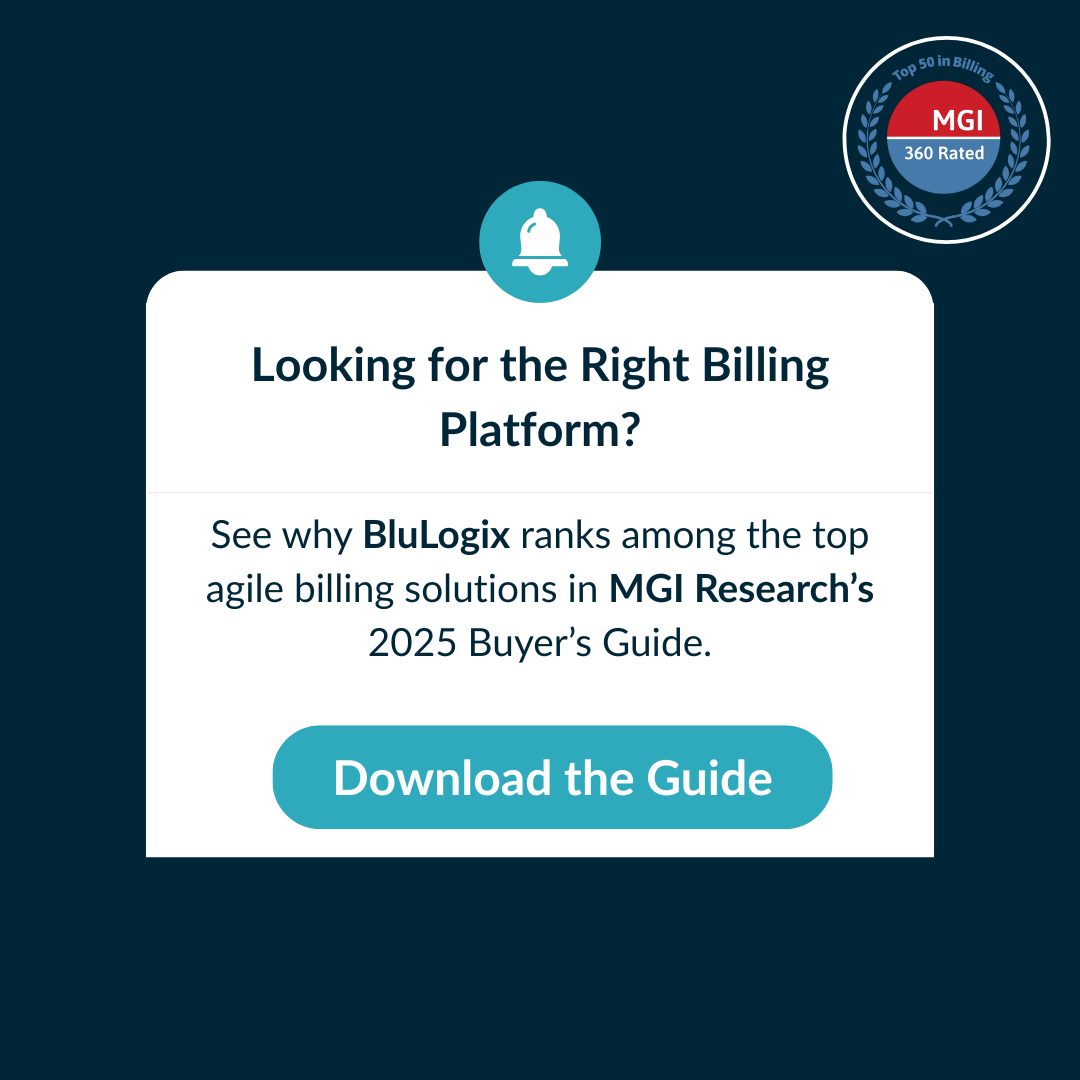Blulogix Whitepaper
11 Signs You Need a Better Recurring Revenue Billing Process

Table of Contents
Introduction:
As businesses grow and evolve, the complexities of managing recurring revenue models increase significantly. A robust, efficient billing process is not just desirable—it’s essential for sustainable growth and customer satisfaction. Below are eleven critical signs that indicate your current recurring revenue billing system might be holding back your business potential, and how automating and integrating systems can address these challenges.
Limited Automation:
- Sign: Manual processes dominate your billing operations, leading to errors and inefficiencies.
- Impact: Slows down operations and increases the likelihood of errors, affecting customer satisfaction.
- Solution: Implementing automation to streamline billing processes from invoicing to payment collection.
Description:
In today’s digital age, automation in billing processes is not just a luxury—it’s a necessity for efficiency and accuracy. Limited automation is a significant indicator that your billing system may be outdated or insufficient. This typically manifests in manual data entry, reliance on spreadsheets, and the need for human intervention in tasks that could be automated, such as generating invoices, processing payments, and updating customer records.
Manual Invoicing:
A company uses manual methods to create and send out invoices. This process involves employees entering data into spreadsheets, calculating charges based on usage or flat rates manually, and even sending invoices via email or post. This method is time-consuming, prone to human error, and not scalable as the company grows.
Payment Collection:
An organization relies on staff to manually track payment deadlines, send reminders, and process payments as they arrive. This can lead to delays in recognizing revenue, discrepancies in accounts receivable, and a poor customer experience due to the slow processing of transactions.
Customer Account Updates:
Every time a customer’s service plan changes, an employee must manually update the account details in several systems. This could involve adjusting the service terms, updating the billing cycle, and recalculating the billing amount for future invoices. Manual updates increase the risk of inconsistent data across systems and can lead to billing inaccuracies.
Impact of Limited Automation:
The lack of automation can significantly hamper a business’s ability to scale operations effectively. As transaction volumes grow, the manual processes become bottlenecks that not only increase operational costs but also affect service quality. Businesses with manual processes are less agile, slower to respond to customer needs, and more likely to encounter errors that can damage customer relationships.
Solution:
Implementing a fully automated billing system can transform these manual processes into efficient, error-free operations. Automation ensures that invoices are generated and sent on time, payments are processed immediately upon receipt, and customer accounts are always up-to-date with the latest subscription changes. This not only frees up valuable resources to focus on more strategic tasks but also significantly enhances accuracy and customer satisfaction.
Investing in a modern billing platform which offers comprehensive automation capabilities, can streamline your billing operations, reduce costs, and improve both accuracy and customer satisfaction across the board.
Inadequate System Integration and Disconnected Systems:
- Sign: Disparate systems that do not communicate effectively, causing data silos.
- Impact: Leads to inconsistent data across billing, CRM, and ERP systems, complicating every aspect of account management.
- Solution: Integrating all systems to ensure seamless data flow and unified operations.
Description:
A common challenge that signals the need for a better recurring revenue billing process is the presence of disconnected systems within an organization. When critical business systems such as CRM, ERP, and billing software operate in silos, it impedes the flow of data, complicates revenue management, and can lead to significant inefficiencies and errors. Seamless integration across these platforms is crucial for maintaining data integrity, improving visibility, and enhancing operational efficiency.
Inconsistent Customer Data:
A company finds that customer data in the CRM system does not match the billing information in the billing software. For instance, when a salesperson updates a customer’s service package in the CRM, this change does not automatically reflect in the billing system, leading to incorrect billing and customer dissatisfaction.
Delayed Financial Reporting:
An organization’s finance team struggles with compiling comprehensive financial reports due to data being scattered across CRM, ERP, and billing systems. This lack of integration means financial reporting is not only slow but also often inaccurate, impacting strategic decision-making and financial planning.
Cumbersome New Product Rollouts:
Launching new products or services becomes a logistical nightmare because updates need to be manually made in several systems. For example, a new subscription model requires changes in the product catalog, pricing adjustments in the billing system, and updates in the CRM for sales tracking, each step requiring manual intervention.
Impact of Disconnected Systems:
Disjointed systems lead to inefficiencies in nearly every aspect of subscription management, from onboarding new customers and maintaining accurate billing to financial reporting and compliance. They require excessive manual labor to maintain coherency across platforms, significantly increasing the risk of errors and reducing the organization’s agility.
Integrating all key systems through a unified billing platform can drastically improve the situation. A robust solution like BluLogix not only facilitates seamless data flow between different systems but also ensures that all departments have access to consistent, up-to-date information. This integration supports real-time data exchange, automates workflows across platforms, and enhances overall operational efficiency.
Adopting an integrated approach not only minimizes the risk of errors but also speeds up processes like invoicing, reporting, and new product introductions, ultimately leading to a better customer experience and more accurate financial management. It empowers companies to be more responsive to market changes and customer needs, paving the way for sustained growth and profitability.
Complications with Data Mediation:
- Sign: Struggling to handle data from multiple sources and formats.
- Impact: Impacts billing accuracy and delays in revenue recognition.
- Solution: Utilizing advanced data mediation tools to harmonize data input and simplify the billing process.
Description:
Data mediation complications arise when businesses have to manage and integrate diverse data from multiple sources and formats, a common scenario in complex B2B environments. This challenge is particularly acute for companies with extensive service offerings that span various platforms and geographic locations, leading to inconsistencies and errors in billing data. Properly mediating this data is crucial for accurate billing and timely revenue recognition.
Multi-Source Integration:
An international cloud services provider gathers usage data across different systems and regional offices. The disparate data, ranging from API calls to server logs, must be normalized and reconciled before billing. Without effective data mediation, discrepancies become frequent, leading to billing errors that undermine customer trust and complicate revenue forecasts.
Format Variability:
A digital content distributor deals with data from various content platforms, each using different formats for tracking user interactions and transactions. Mediating this data to ensure that all interactions are billed correctly becomes a logistical nightmare, requiring substantial manual intervention to ensure consistency across the billing cycle.
Real-Time Data Processing:
A telecommunications company needs to process billing data in real-time to apply charges for data usage, calls, and message services. The variety and velocity of data from millions of users worldwide necessitate robust data mediation solutions to ensure that every piece of data is accurately captured and reflected in customer bills.
Impact of Data Mediation Complications:
Ineffective data mediation can lead to significant billing inaccuracies, customer dissatisfaction, delayed revenue recognition, and increased operational costs due to the need for additional resources to manually check and reconcile data discrepancies.
Solution:
To address these challenges, employing advanced data mediation tools is essential. These tools should be capable of:
- Harmonizing Diverse Data Sources: Automatically integrating and normalizing data from various sources to ensure consistency and accuracy.
- Automating Data Transformation: Transforming data into a unified format suitable for billing systems without manual intervention.
- Real-Time Processing Capability: Handling large volumes of data in real-time to support immediate billing and revenue recognition.
Implementing a sophisticated billing platform like BluLogix that includes powerful data mediation capabilities can significantly streamline the billing process. By automating the ingestion, transformation, and consolidation of data, BluLogix ensures that all billing information is accurate and up-to-date, enabling businesses to recognize revenue promptly and maintain high levels of customer satisfaction.
Billing Inaccuracies:
- Sign: Frequent errors in billing statements and disputes from customers.
- Impact: Damages customer trust and increases operational costs due to corrections and adjustments.
- Solution: Enhancing accuracy with automated systems that reduce human error and improve verification processes.
Description:
Inaccurate billing is a critical sign that a company may need to overhaul its recurring revenue billing process. Errors in billing can stem from several issues, including outdated data, manual entry errors, or inadequate billing systems that cannot handle complex pricing models or the specific nuances of subscription-based billing. These inaccuracies can lead to customer dissatisfaction, disputes, and revenue loss.
Overcharging and Undercharging:
A telecommunications company struggles with frequent overcharging and undercharging due to errors in rate application and usage data discrepancies. Customers either face unexpected high bills or the company loses revenue due to underbilling, resulting in a high volume of customer complaints and increased churn rates.
Billing Delays:
A SaaS provider experiences delays in sending out invoices due to the need for manual checks and corrections of billing data. These delays not only affect cash flow but also harm the company’s reputation, as customers question the reliability and professionalism of the business.
Complex Discount Management:
A fitness subscription service offers multiple discount and promotional packages, which change frequently. Their current billing system fails to update and apply these changes correctly, leading to incorrect billing statements that require manual adjustments, consuming valuable administrative time and resources.
Impact of Inaccurate Billing:
Inaccurate billing can erode customer trust, reduce satisfaction, and potentially lead to legal issues or regulatory fines, particularly in industries where billing accuracy is closely monitored. It also demands additional resources to address billing disputes and corrections, which can significantly increase operational costs.
Solution:
Implementing a sophisticated billing platform that automates and ensures the accuracy of every aspect of the billing process is essential. Such platforms should support complex pricing structures, promotional handling, and real-time data processing to reduce the likelihood of errors. Moreover, they should provide robust auditing tools to quickly identify and rectify discrepancies. Automation reduces the dependency on manual processes, thereby increasing efficiency and accuracy, and ultimately enhancing customer satisfaction and loyalty.
A robust subscription billing software system not only automates the invoicing and billing processes but also integrates seamlessly with usage tracking and customer management systems to ensure that all charges are accurately calculated and applied according to the latest pricing rules and customer agreements. This leads to a more transparent billing process where discrepancies are quickly identified and corrected, maintaining the integrity of financial transactions and customer trust.
Difficulty Expanding Sales Channels:
- Sign: Current billing system cannot support new sales channels or partner ecosystems.
- Impact: Limits market expansion opportunities and complicates channel management.
- Solution: Upgrading to a more flexible billing platform that can easily integrate new channels and partners.
Description:
As businesses aim to grow and diversify their market presence, the ability to efficiently manage and integrate new sales channels becomes crucial. A common issue that arises is when the current billing system lacks the flexibility to support new sales channels or partner ecosystems. This limitation can severely hamper a company’s ability to penetrate new markets and effectively manage multiple channel relationships.
E-commerce Integration:
A software company wants to expand its sales through third-party e-commerce platforms in addition to its direct sales channels. However, the current billing system is not equipped to synchronize with these platforms, leading to disjointed sales records and inventory discrepancies, which in turn cause billing errors and customer dissatisfaction.
Partner Ecosystem Expansion:
An enterprise offering cloud storage solutions plans to expand its reach by partnering with resellers across different countries. Each reseller has different billing cycles and pricing structures. The company’s existing billing system is unable to accommodate these variations seamlessly, resulting in administrative overhead and delayed revenue recognition.
A consumer electronics manufacturer introduces its products to both online marketplaces and brick-and-mortar retailers. The need to manage diverse pricing strategies, promotional discounts, and rebates across these channels overwhelms the old billing system, which is designed for simpler, less varied transactions.
Impact of Difficulty Expanding Sales Channels:
Inability to integrate and manage new sales channels effectively can lead to missed opportunities for market expansion, strained relationships with partners, and a competitive disadvantage in dynamically changing markets. It also complicates inventory and revenue management, increasing the risk of errors and inefficiencies.
Solution:
Adopting a flexible and robust billing platform is the key to overcoming these challenges. Such a platform should offer:
- Multi-Channel Integration: Capabilities to integrate with various types of sales channels, including online, offline, direct, and indirect, ensuring smooth transitions and consistent data flow.
- Partner Management Tools: Features that facilitate the management of diverse partner ecosystems with different billing requirements, enhancing collaboration and reducing conflicts.
- Scalability and Customization: The ability to scale as needed and customize billing operations to accommodate new business models and market strategies.
Upgrading to an advanced billing platform like BluLogix not only supports current operational needs but also paves the way for future growth. It enables businesses to seamlessly manage multiple sales channels and partner relationships, thereby driving increased sales and improving overall business agility.
Lack of Pricing Flexibility:
- Sign: Difficulty in implementing and managing various pricing strategies.
- Impact: Prevents you from capitalizing on competitive pricing tactics and customizing offers.
- Solution: Adopting a billing system that supports dynamic pricing models and allows for quick adjustments.
Description:
In today’s highly competitive market, the ability to adapt pricing strategies swiftly and effectively is crucial for staying ahead. Many businesses face the challenge of a rigid billing system that struggles with implementing diverse and dynamic pricing models. This lack of flexibility can hinder a company’s ability to respond to market changes, offer customized pricing options, and deploy strategic discounts or promotions that could drive sales and improve customer retention.
Seasonal Pricing Adjustments:
A tourism service provider wants to implement seasonal pricing, with reduced rates during the off-peak season and premium rates during high demand periods. However, their existing billing system requires manual updates to change pricing, a time-consuming process that results in delayed implementation and lost revenue opportunities.
Volume Discounting:
A software vendor wishes to offer volume discounts to enterprise clients based on the number of licenses purchased. The current system does not automatically adjust pricing based on customer segments or purchase thresholds, making it difficult to provide tailored offers that could enhance customer satisfaction and loyalty.
Promotional Campaigns:
An online retailer plans to run limited-time promotional campaigns offering special discounts on certain products to boost sales. The lack of automated tools for setting up and managing these promotions in their billing system leads to operational bottlenecks and errors in billing, tarnishing the customer experience and potentially hurting the brand reputation.
Impact of Lack of Pricing Flexibility:
Inability to implement flexible pricing and discounts quickly can result in missed market opportunities, inability to effectively compete on pricing, and challenges in meeting customer expectations for personalized offers. This inflexibility may also reduce a business’s ability to experiment with new pricing strategies that could potentially unlock new customer segments and revenue streams.
Solution:
To overcome these challenges, businesses need to adopt a billing system that:
- Supports Dynamic Pricing Models: Allows for easy creation and management of multiple pricing strategies, including tiered pricing, volume discounts, and time-based rates.
- Enables Quick Adjustments: Features tools that enable quick updates to pricing structures in response to market dynamics or strategic needs without extensive manual intervention.
- Automates Promotional Offers: Provides capabilities to automate the setup and application of promotional discounts and special offers, ensuring they are accurately reflected in billing processes.
Implementing a more adaptable and responsive billing system like BluLogix can transform a company’s ability to engage with its market effectively. It enables not just survival but thriving in a competitive environment by leveraging pricing as a strategic tool for growth and customer engagement.
Poor Scalability:
- Sign: Billing system struggles with increasing transaction volumes and customer growth.
- Impact: Stifles growth and leads to system overloads during peak periods.
- Solution: Investing in scalable billing solutions that grow with your business needs.
Description:
Scalability in the realm of billing systems is vital for businesses anticipating growth in customer base or transaction volume. A billing system that cannot efficiently scale to handle increased demand becomes a bottleneck, impeding overall business growth and reducing operational efficiency. When transaction volumes spike or customer numbers swell, a non-scalable system may become unstable or slow, leading to delayed billing cycles and frustrated customers.
E-Commerce Expansion:
An e-commerce company experiences rapid growth during the holiday season, doubling its customer base and transaction volume. The existing billing system, designed for a smaller scale, fails to process transactions quickly, leading to delays in order confirmation and potential loss of sales as customers abandon their carts.
Global Market Entry:
A SaaS provider enters new international markets, dramatically increasing the number of customers and the complexity of billing due to various currencies and tax regulations. Their current system, limited in handling such complexity at scale, results in inaccurate invoices and compliance issues, tarnishing the company’s reputation abroad.
Mergers and Acquisitions:
A business undergoing a merger faces the challenge of integrating billing systems with significantly different customer and transaction volumes. The existing systems are not equipped to merge data seamlessly, leading to prolonged system integration, data inconsistencies, and operational delays.
Impact of Poor Scalability:
A billing system that struggles to scale can severely restrict a company’s ability to grow. It can lead to system downtimes during critical business periods, customer dissatisfaction due to poor service delivery, and ultimately lost revenue opportunities. Additionally, it can increase operational costs disproportionately as businesses may need to invest in quick fixes and temporary solutions to handle peak loads.
Solution:
To address scalability issues, businesses should:
- Adopt Cloud-based Scalable Solutions: Utilize cloud-based billing platforms that offer elasticity, automatically adjusting to changes in demand without needing manual intervention.
- Leverage Modern Architectures: Implement modern billing solutions built on microservices architecture, which supports scalability by allowing parts of the system to scale independently based on the load.
- Continuous Performance Optimization: Regularly update and optimize the billing system to handle larger datasets and more complex transactions as the business grows.
Investing in scalable billing solutions ensures that the infrastructure not only supports current operations but is also primed for future growth. This strategic approach allows businesses to expand confidently, knowing that their billing system will efficiently manage increased demands, maintain performance, and ensure customer satisfaction throughout their growth trajectory.
Inefficient Revenue Recognition:
- Sign: Challenges in aligning revenue recognition with the delivery of services.
- Impact: Affects financial reporting and compliance with accounting standards.
- Solution: Implementing solutions that automate revenue recognition according to recognized standards.
Description:
Efficient revenue recognition is crucial for accurate financial reporting and compliance with accounting standards such as ASC 606 and IFRS 15. These standards require that revenue is recognized when a customer gains control of a service or product, not necessarily when the payment is made. Challenges in aligning revenue recognition with the delivery of services can lead to discrepancies in financial statements and issues with audits.
Software-as-a-Service (SaaS) Provider:
A SaaS company offers annual subscriptions, with revenue traditionally recognized up front. However, to comply with current standards, revenue should be recognized as the service is delivered monthly. Their old system, which lacks automated functionality for revenue distribution over the service period, leads to inaccuracies in monthly earnings reports and complicates end-of-year financial reconciliation.
Construction and Engineering Firm:
A company in this sector faces challenges with project-based billing where revenue recognition should align with project milestones. Due to the manual tracking of project progress and associated revenue, the firm struggles with delayed and sometimes inaccurate revenue booking, affecting cash flow visibility and financial planning.
Telecommunications Provider:
A telecom company offers bundled services (internet, cable, phone) with equipment (like routers and set-top boxes) where revenue from equipment should be recognized at the point of sale, and services over the usage period. Their existing system fails to differentiate these components effectively, leading to revenue recognition errors and audit risks.
Impact of Inefficient Revenue Recognition:
Inaccurate revenue recognition can lead to significant issues including distorted financial results, poor decision-making based on incorrect financial data, and potential non-compliance with accounting standards, which can result in penalties and damage to business credibility.
Solution:
To streamline revenue recognition processes, businesses should consider:
- Automated Revenue Management Systems: Implement systems that automatically recognize revenue based on delivery and contractual terms, ensuring compliance with accounting standards.
- Real-time Reporting Capabilities: Use platforms that offer real-time insights into revenue streams, allowing for timely adjustments in revenue recognition practices.
- Integration with Delivery and Sales Systems: Ensure that revenue recognition systems are integrated with order management and delivery systems to automatically trigger revenue recognition as goods and services are delivered.
Adopting these solutions helps ensure that revenue is recognized in a timely and accurate manner, improving financial reporting accuracy and compliance with regulatory requirements. This strategic approach not only supports more reliable financial forecasting and planning but also enhances the overall trust in financial statements presented to stakeholders.
Inadequate Reporting and Analytics:
- Sign: Limited ability to generate insightful financial and operational reports.
- Impact: Hampers strategic decision-making and market responsiveness.
- Solution: Using advanced analytics tools integrated with the billing system for real-time reporting.
Description:
In the complex landscape of B2B subscription billing, the ability to generate comprehensive and insightful reports is crucial. Businesses often struggle with outdated or simplistic reporting tools that fail to provide the depth of data needed for informed decision-making. This limitation can severely hamper a company’s ability to respond to market changes and optimize operations effectively.
E-commerce Platform:
An e-commerce company struggles to track customer lifetime value and attrition rates accurately due to inadequate reporting tools. Their current system only offers basic sales reports, lacking the analytics to segment data by customer demographics or behavior patterns, which are essential for crafting targeted marketing strategies and improving customer retention.
Healthcare Services Provider:
A healthcare management company faces challenges in analyzing the profitability of its services across different regions and patient demographics. Their existing billing system does not support the generation of detailed financial reports that consider varying costs and revenue across services, leading to a blanket approach to budgeting and resource allocation.
Manufacturing Firm:
A manufacturer with a subscription model for maintenance services is unable to effectively track the usage patterns of their machines in different industrial sectors. This lack of detailed operational analytics prevents them from optimizing maintenance schedules and can lead to either over-servicing or costly breakdowns due to under-servicing.
Impact of Inadequate Reporting and Analytics:
When businesses cannot access detailed and actionable insights from their data, strategic decision-making becomes guesswork. This can result in missed opportunities for improvement, inefficient resource allocation, and a slower response to market trends, ultimately affecting competitive edge and profitability.
Solution:
To overcome challenges in reporting and analytics, businesses should consider:
- Advanced Analytics Tools: Implementing sophisticated analytics solutions that can integrate seamlessly with existing billing systems to provide real-time, actionable insights.
- Customizable Dashboard Capabilities: Utilizing platforms that offer customizable dashboards, allowing different departments to view relevant data tailored to their specific needs.
- Data Visualization Tools: Incorporating modern data visualization tools to make complex data more accessible and understandable for stakeholders at all levels.
By enhancing their reporting and analytics capabilities, companies can transform raw data into strategic insights, empowering them to make more informed decisions and better adapt to the dynamic demands of the market. This strategic improvement not only boosts operational efficiency but also enhances overall business agility.
Cumbersome Customer Management:
- Sign: Difficulties in managing subscriptions, upgrades, downgrades, and cancellations efficiently.
- Impact: Leads to customer dissatisfaction and increased churn rates.
- Solution: Deploying a customer-centric billing platform that offers flexibility and ease in managing customer lifecycle events.
Description:
Effective customer management is vital for retaining clients and maintaining high satisfaction levels in any subscription-based business model. However, many companies face challenges with cumbersome systems that complicate the management of subscriptions, including upgrades, downgrades, and cancellations. These inefficiencies can bog down customer service operations and negatively impact the customer experience.
Software-as-a-Service (SaaS) Provider:
A SaaS company notices a significant uptick in customer complaints regarding the rigidity of their subscription model. Clients find it difficult to adjust their service levels or features as their business needs change, leading to frustration and cancellations. The company’s rigid system does not allow for easy customization or changes without customer support intervention.
Telecommunications Operator:
A telecom operator struggles with its legacy systems that handle customer upgrades and downgrades inefficiently. Customers experience delays and incorrect billing when changing their service plans, resulting in a high volume of customer service calls and increased dissatisfaction.
Fitness Subscription Company:
A company offering fitness subscriptions via an online platform often encounters issues when members try to pause or cancel their subscriptions. The process is not automated, requiring manual intervention from the support team, which leads to delays and errors, frustrating customers who want swift resolutions.
Impact of Cumbersome Customer Management:
Inefficient customer management processes can lead to high churn rates as customers may feel that their needs are not being adequately addressed or that the service lacks flexibility. Poor handling of subscription changes also decreases overall customer satisfaction and can tarnish a company’s reputation, making it difficult to attract new customers.
Solution:
To address these issues, companies should consider:
- Flexible Customer Management Tools: Implementing modern billing systems that allow customers to easily modify their subscription levels and manage their accounts without needing to contact customer support.
- Automated Processes: Utilizing platforms that automate common customer requests such as account upgrades, downgrades, pauses, or cancellations, thereby reducing the potential for human error and improving response times.
- Enhanced Customer Portals: Providing robust self-service portals that empower customers to handle their subscriptions directly, offering a more satisfying and engaging user experience.
By deploying a customer-centric billing platform, businesses can streamline the management of customer lifecycle events, significantly improving the efficiency of service modifications and enhancing customer satisfaction. This strategic enhancement not only retains existing customers but also attracts new clients by showcasing a commitment to excellent customer service.
Revenue Leakage Management:
- Sign: Lack of mechanisms to detect and prevent revenue loss.
- Impact: Leads to unaccounted financial losses and impacts the bottom line.
- Solution: Implementing sophisticated systems designed to identify and rectify revenue leaks to maximize earnings and ensure financial integrity.
Description:
Revenue leakage is a critical concern for businesses with complex billing processes, especially those that rely on subscription and usage-based models. Without adequate mechanisms to detect and rectify discrepancies, companies can suffer significant financial losses that go unnoticed until they severely impact profitability.
Cloud Services Provider:
A provider of cloud storage and computing services faces challenges with untracked or unbilled automated scale-ups in service usage. Due to system limitations, additional resources consumed by customers during peak times are not consistently captured, resulting in considerable revenue leakage.
Digital Media Company:
An online streaming service struggles with inadequate tracking of multi-account usage and improper application of family plans. Some users exploit loopholes to extend service access beyond the agreed terms, leading to revenue losses that the current system fails to identify and address.
Telecommunications Firm:
A telecommunications company experiences revenue leakage due to outdated tariffs and improper alignment with promotional offers, where customers are not transitioned back to standard rates after the end of promotional periods. This oversight leads to prolonged reduced billing that affects the company’s revenue.
Impact of Revenue Leakage:
Revenue leakage not only leads to direct financial losses but also creates discrepancies in financial reporting, complicating the fiscal management and strategic planning of the company. It erodes trust among stakeholders and can jeopardize compliance with financial regulations.
Solution:
To combat revenue leakage effectively, businesses should consider:
- Advanced Monitoring Tools: Deploying state-of-the-art monitoring systems that continuously track and analyze transactions and usage data to detect anomalies or unexpected patterns indicative of leakage.
- Automated Reconciliation Processes: Implementing automatic systems that can cross-verify billed and unbilled usage, ensuring that all consumable services are accurately invoiced.
- Comprehensive Audits and Adjustments: Regularly auditing billing and operational processes to identify and rectify sources of leakage. Adjusting policies and systems as needed to close loopholes and enhance the accuracy of billing cycles.
By investing in sophisticated systems designed specifically to manage and prevent revenue leakage, businesses can safeguard their earnings and maintain financial integrity, ensuring the longevity and fiscal health of their operations. These systems not only detect leaks but also provide actionable insights to prevent future occurrences, securing the company’s revenue streams against potential losses.
Conclusion: Recognizing these signs early can save your business from potential losses and pave the way for enhanced operational efficiency and growth. Embracing automation, system integration, and sophisticated billing solutions like those offered by BluLogix can transform your billing operations and help you achieve your business objectives.
Reviews

Michael R.
President, Allnet Air Inc. - Telecommunications
Best Outsourced Billing for Mobility

Karen R.
Manager, Cloud Billing - Computer Software
BluLogix has been a great partner.
“Over the last several years, I have seen continual enhancements and additions to the platform. BluLogix has created a comprehensive solution for users. They provide great communication regarding upgrades and address concerns thoroughly and timely.”

Sara K.
Marketing, Graphic Design & Social Media Management - Marketing and Advertising
Fantastic platform. Recommend!
Industry Leaders
Reviews

Michael R.
President, Allnet Air Inc. - Telecommunications
Best Outsourced Billing for Mobility

Karen R.
Manager, Cloud Billing - Computer Software
BluLogix has been a great partner.
“Over the last several years, I have seen continual enhancements and additions to the platform. BluLogix has created a comprehensive solution for users. They provide great communication regarding upgrades and address concerns thoroughly and timely.”

Sara K.
Marketing, Graphic Design & Social Media Management - Marketing and Advertising
Fantastic platform. Recommend!

